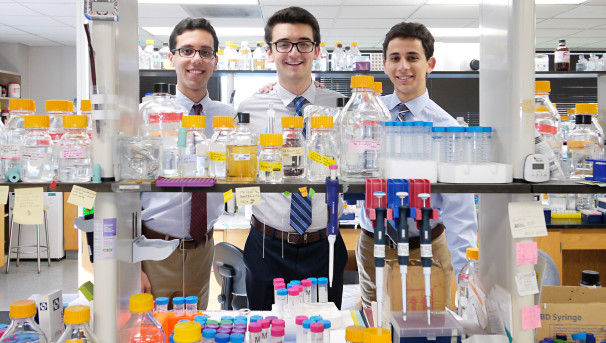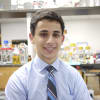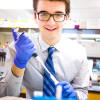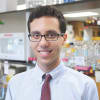Terps in Space
Overview
Though humanity is moving closer to long-term space travel, there are still daunting challenges to reaching the “final frontier.” NASA and other space agencies are pushing to send manned flights to Mars as early as the 2030s, and even before then we will be sending more astronauts into Earth’s orbit. As astronauts spend more time in the weightlessness of space, we need to understand how their health is affected by long-term exposure to microgravity. One of the greatest threats to astronaut health is the risk of infectious disease; scientists at NASA have already found that bacteria move more easily and grow more robustly in space, suggesting that bacterial infections may be more dangerous and require different treatment than here on Earth.
Our Project
Not knowing exactly how and why bacteria behave differently in space poses a serious risk for astronaut safety. Our goal is to understand, on the molecular level, how bacteria change the expression of their genes in space, focusing on why they move more easily in microgravity. After having been selected finalists in the UMD Student Spaceflight Experiments Program Mission 10, in February of 2017 we will send an experimental capsule containing dormant bacteria to the International Space Station., The bacteria will grow in space, where they will adapt to this microgravity environment, and then will return to us on Earth for analysis. We will then use a powerful technique called RNAseq to analyze bacterial gene expression patterns; by running the same experiment in parallel on Earth, we will essentially be able to observe any and every difference in bacterial gene expression caused by microgravity. We hope that our work can contribute to astronaut safety on long-term voyages. Our full abstract can be found below.
We already have a guaranteed spot on a rocket to take our experiment to ISS, and this campaign is key to obtaining funds for analysis after we receive the bacteria from space. Your generous contribution will help fund our experimental procedures, costs associated with data analysis and publication of our findings, and allow us to be in Launch Control to supervise experimental deployment from Cape Canaveral, Florida.
Scientific Abstract
Long-term space habitation poses numerous issues for astronaut health, including the prevention and treatment of infectious disease. NASA has made public its concern for the threat posed by infectious bacteria to long-term manned missions, and has conducted experiments on the International Space Station (ISS) to determine how microgravity affects pathogens. This prior research suggests that bacterial motility, a crucial component of many infections, is increased aboard the ISS. Our study seeks to confirm these findings and elucidate which bacterial genes specifically are responsible for modified motility, in the hope of better understanding how disease-causing pathogenic bacteria act in space. We will send dormant bacterial spores of Bacillus subtilis to the ISS, where they will be activated, allowed to grow and divide, and then preserved in microgravity before returning to Earth. We will explore if microgravity causes the bacteria to express (activate or deactivate) their genes differently compared to an identical control sample grown on Earth. This change is recorded in the mRNA produced by the bacteria, and any changes in the number of mRNA molecules and the individual sequence codes of each mRNA strand can be determined using RNA sequencing. The sequence data can then be processed via high-throughput bioinformatic techniques, allowing determination of which bacterial genes are differentially expressed in microgravity, and the molecular pathways that underlie them. This study will shed light on how bacterial motility differs in space, and serve as a critical step in safeguarding astronauts from acquiring infectious disease.
Acknowledgments
Our team would like to thank the following groups and individuals for their continuing support:
- The Student Spaceflight Experiments Program (SSEP), a program of the National Center for Earth and Space Education (NCESSE) and the Arthur C. Clarke Institute for Space Education
- The Maryland Space Grant Consortium
- The College of Computer, Mathematical, and Natural Sciences (CMNS) at the University of Maryland, College Park
- Dr. Wade C. Winkler, Department of Cell Biology and Molecular Genetics, CMNS, UMD
- Dr. Kenneth Frauwirth, Department of Cell Biology and Molecular Genetics, CMNS, UMD
- Dr. Daniel Serrano, Institute for Research in Electronics and Applied Physics, UMD
NCESSE’s SSEP on-orbit educational research opportunity is enabled through NanoRacks, LLC, which is working in partnership with NASA under a Space 3 Act Agreement as part of the utilization of the International Space Station as a National Laboratory
Gifts in support of the University of Maryland are accepted and managed by the University of Maryland College Park Foundation, Inc., an affiliated 501(c)(3) organization authorized by the Board of Regents. Contributions to the University of Maryland are tax deductible as allowed by law. Please see your tax advisor for details.
$20
Experiment Storage
Lab equipment for space sample storage. Your donation will help us acquire Eppendorf tubes and other needed materials in which to preserve our samples.
$50
Pipette Tips
Box of pipette tips for RNAseq sample preparation. Your funding will enable us to purchase instruments needed to transfer and process our RNA.
$100
Lab Materials
Box of pipette tips for RNAseq sample preparation. Your funding will enable us to purchase needed instruments and reagents to transfer and process our RNA.
$200
RNA sequencing preparation
RNA library preparation for one sample. Your funding will help us convert unstable RNA to a stable intermediary which can be sequenced.
$500
Half RNA Sequencing run
Half a single-read RNA-sequencing run. Your funding will pay for half of a lane on an Illumina HiSeq1500 sequencer, allowing us to read and quantify RNA.
$1,000
Cape Canaveral Launch Control
Trip to the Launch Control Room in Cape Canaveral. Your donation will enable us to fly to Cape Canaveral, Florida, and observe our experiment launch in a SpaceX Falcon 9 rocket.
$2,500
Complete RNA Sequencing Run
Full paired-end RNA-sequencing run. Your funding will pay for a full lane on an Illumina HiSeq1500 sequencer, allowing us to read and quantify RNA.




